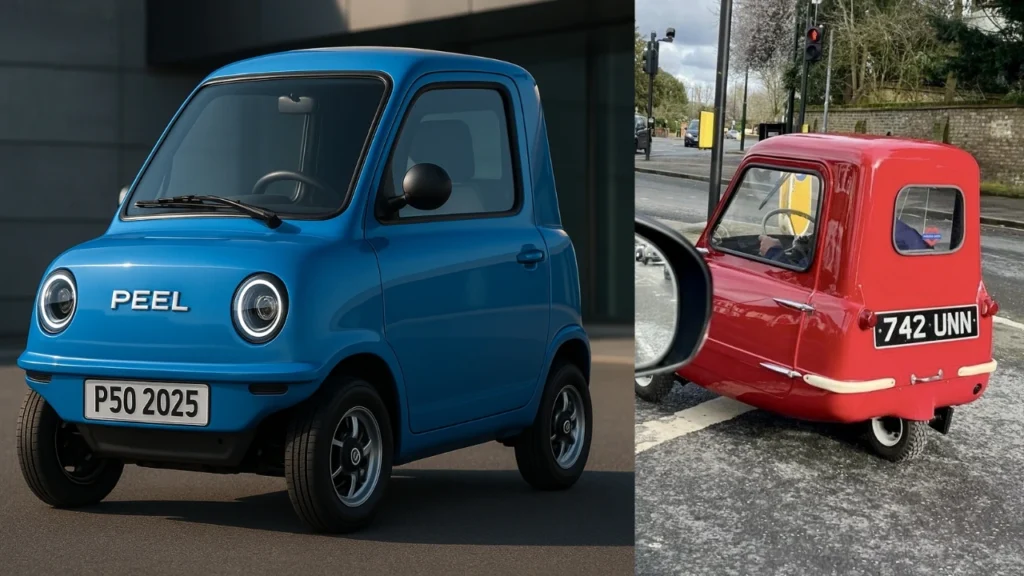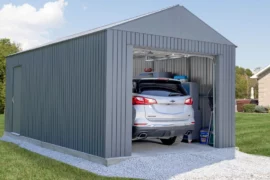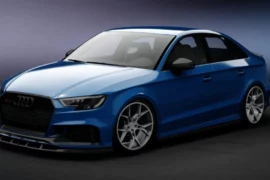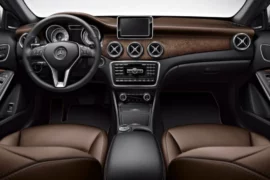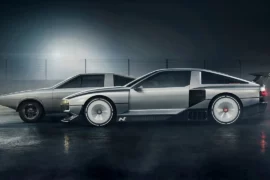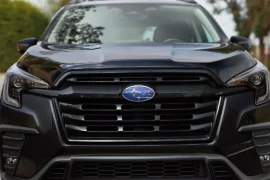If you know Peel P50, you surely know what a legend this barely the size of a washing machine car is. Originally created in the 1960s as the world’s smallest production vehicle, the Peel P50 became a cult favorite thanks to its bizarre proportions, ultra-minimal design, and pop culture fame.
The most notable is its hilarious feature in BBC’s Top Gear, where Jeremy Clarkson famously drove it through the BBC office building. And in 2025, the ride is back with a bang. It is electric, smarter, and surprisingly practical for today’s urban drivers.
As someone who works on everything from compact city cars to full-size trucks almost every day, I have seen just how fast the EV market is changing and how many buyers are looking for something genuinely different.
The all-new 2025 Peel P50 might look like a gimmick at first peek, but there’s real innovation behind the fun. The model is not just about nostalgia. It’s about ultra-efficiency, city-focused design, and regaining simplicity in a world of overcomplicated vehicles.
So whether you are a collector, city commuter, or just curious about the smallest EV hitting the road this year, here’s everything you need to know about the electric return of the P50 and why it might be the most buzzworthy microcar of 2025.
Why the Peel P50 Still Matters
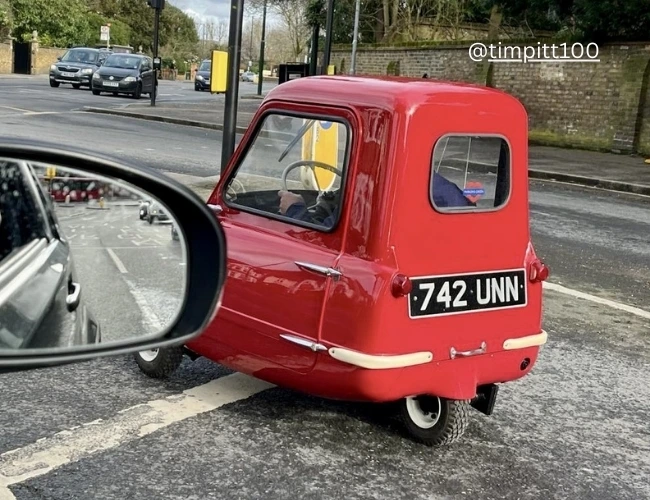
To most people, the P50 is nothing but a strange three-wheeled oddball from the 1960s that holds more similarity to a mobility scooter than a car. But this year, its return has sparked a surprising amount of interest, not only from microcar fans and collectors but from the general audience as well. What’s intriguing is the timing that makes this comeback feel quite relevant.
We are in an era where crossovers keep getting larger, touchscreens keep replacing physical controls, and even entry-level variants come loaded with features half of us rarely use. The Peel P50, in contrast, offers an unconventional idea that less is enough. It simply makes you think: what if you only needed a car for exactly what a car should do?
In dense cities like New York, London, or Tokyo, the drivers aren’t looking for horsepower. They’re looking for maneuverability, affordability, and simplicity, and this car delivers on all three. Honestly speaking, it is not trying to compete with Tesla or Rivians. It is simply carving out a micro-solution to macro problems like congestion, emissions, and over-engineering. It fits in your garage as well as your hallway.
Upcoming Cars:
2026 Toyota RAV4 Goes Hybrid Only with 302 HP and 42-Mile EV Range
Electric Power With a Purpose
The shift to electric power in the 2025 Peel P50 isn’t just a technical upgrade; it’s a bold statement of Peel Engineering. For decades, this vehicle has been a symbol of absurdity and charm, but also inefficiency. Its original 49cc gasoline engine was loud, unreliable, and environmentally outdated by today’s standards. Thus, electrifying it makes perfect sense.
As someone who works on modern EVs and combustion engines daily, I can tell you that the electric conversion of this ride isn’t related to chasing performance or range. It is more about aligning a historically whimsical vehicle with key modern values like zero emissions, low maintenance, and maximum simplicity. It’s a micro-EV that actually makes sense. You can take it out for stop-and-go drives, grocery runs, or first-mile-last-mile commuting.
If we all just be honest with ourselves, one thing will be as clear as a blue sky. Most of us buy vehicles for daily commutes, not long-range driving, which may or may not happen. At present in America, most city drivers don’t need a 300-mile range, but they surely do need convenience.
The new Peel P50 delivers around 30 to 40 miles per charge, enough for a week of errands in a dense urban core. What’s even better is that it does not come with any supercharger, applications, or a learning curve. Simply plug it into a standard home outlet, and you wake up to a fully charged ride.
It doesn’t try to be futuristic or portray itself like one. It just focuses on being useful, a refreshing take in today’s overcrowded and over-marketed EV segment. This latest microcar is proof that sometimes, simple works best.
What’s New in the 2025 Peel P50
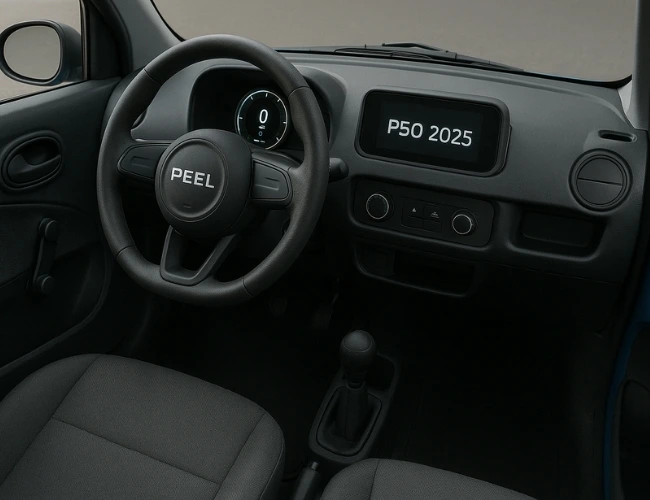
The new Peel P50 looks nearly identical to its 1960s ancestor. But there are some smart updates that showcase it in line with modern-day expectations without losing the oddball charm.
The biggest change is the fully electric powertrain. Peel Engineering now offers a brushless DC motor setup in the enhanced model that delivers a quiet and zero-emissions ride. This ideal ride for quick urban commutes also boasts a key upgrade from its predecessors. The 2025 model finally comes with a working reverse gear, something which was missing in the original.
Not only this, you can also find subtle improvements like LED lighting, a digital speed display, and even a USB-C port for phone charging. The body, like forever, remains tiny and minimal, but the company has made it more sturdier and road-compliant than before.
Overall, every update this buzzing model has received this year modernizes but ensures it keeps its originality. The company aims to keep it legal yet quirky and slightly more livable in today’s cities. And in my opinion, they have achieved what they had in mind.
How the Internet Reacted To the Buzz Around Its Return
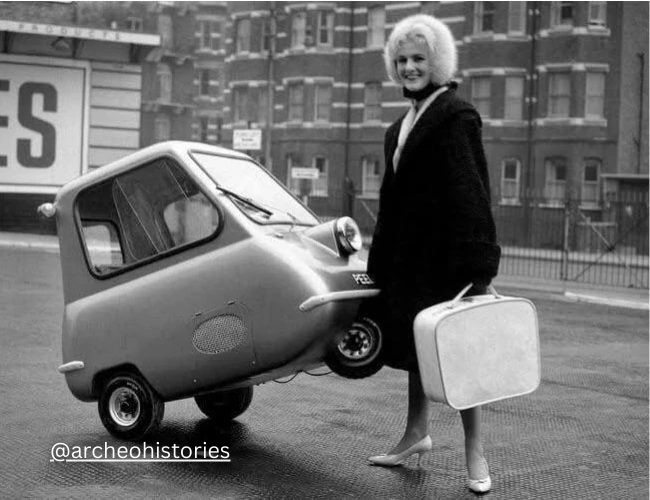
If you are familiar with the 2025 Peel P50, you are not alone. The comeback didn’t arrive with flashy marketing. It quietly rolled itself to the public through online conversation, nostalgic curiosity, and timely posts by respected voices in the automotive world.
A recently posted video titled “2025 Peel P50 Microcar: The World’s Smallest Car Is Back!” gives viewers a first-hand look at the updated electric model, its offbeat size, and city-minded design. While the video hasn’t gone viral, it’s part of a growing wave of content reigniting interest in the world’s smallest production car.
On X (formerly Twitter), UK-based automotive journalist Tim Pitt (@timpitt100), who is also a contributor to outlets like Motoring Research and The Intercooler, shared a live photo of the updated Peel P50, heeding its presence at a recent event and commenting on its relevance in today’s urban mobility landscape.
Another popular user, @archeohistories, shared a nostalgic photo of the original P50, calling attention to its Guinness World Record status and place in automotive history. It drew thousands of views and retweets, amplifying awareness of this microcar’s eccentric legacy.
Thus, you can see that across different social platforms, Peel P50’s reappearance is sparking conversation. This tiniest car in the world is once again capturing hearts, headlines, and timelines. It is something to take into account in today ‘s times where oversized trucks and tech-heavy EVs dominate the roads.
Is It Just a Gimmick or a Symbol of a Smarter Future?
Since its launch Peel P50 has never been taken seriously. It has been made fun of, called a toy, and even labeled as a glorified mobility scooter. But the latest reappearance has shifted the course of talks. It is now seen as a savior in an age of over-complication.
If you own a car, I would like you to ask yourself a serious question: Does it really make sense for us to keep sizing up our vehicles when we spend most of our time behind the wheel simply stuck in traffic and generally alone or with one passenger?
This new car flips this logic and makes you think. It may be small, but it is also radically efficient. It provides the least you might need to get around your city streets safely, legally, and affordably.
And that is why this return is anything but a gimmick. It is part of a bigger cultural shift where the focus is on intentional driving, not owning the biggest and flashiest vehicle. In a world where urban congestion, rising fuel prices, and environmental concerns collide, cars like the P50 feel less like early blueprints for smarter transport ecosystems.
I also want to clarify that this ride is not meant for everyone. It is a proud car for one purpose. If you live in neighborhoods where parking is tight, fuel is expensive, or the short trips, maneuvering in tight parking, and low-speed commutes make up most of your driving, this vehicle represents a kind of rebellious simplicity.
Frequently Asked Questions
Is the Peel P50 still being made in 2025?
Yes, Peel Engineering Ltd. continues to build updated versions of the P50 in fully electric and petrol-powered powertrains. These are made in limited numbers, and you can place an order directly from licensed builders in the UK.
Can I legally drive a Peel P50 in the U.S.?
You can, based on where you live. In some American states, this vehicle is treated as a moped or a low-speed vehicle, so you’ll need to check your local laws. In addition to our country, it is also street-legal in parts of the UK and Europe under similar conditions. Buy away if you want one, but just don’t expect to hit the freeway with it.
How much does the new Peel P50 cost?
As of the current calendar year, the new P50 will cost you around somewhere between $13,000 and $18,000, depending on the version and any customizations you may ask for. If you are eyeing older collector models, they may come with higher prices due to rarity.
What are the specs of the latest Peel P50?
The updated model keeps the original look but also includes a few upgrades worth noticing:
Length: Around 54 inches
Width: About 39 inches
Weight: Roughly 216 lbs
Engine: Either a 49cc four-stroke petrol or a 2.3 kW brushless electric motor
Top Speed: 28 mph
Transmission: CVT with a reverse gear.
Is the new Peel P50 practical for everyday use?
The practicality of any vehicle depends on what your everyday needs look like. If you are mostly doing short runs, live somewhere with tight streets or parking, and don’t haul passengers, the P50 might be perfect for you. It is fun, efficient, and easy to park. However, it is not fast, only fits one person, has only one door, and isn’t made of highways.
Was the Peel P50 brought back before 2025?
Yes, it was! Back in 2010, the car brand brought it back alongside its sister model Trident. That revival focused on auto aficionados who wanted the charm of the original but with updated mechanicals that met modern safety and emissions standards.
Why the Peel P50 Comeback Matters
The return of Peel P50 cleverly reflects how we think about automobiles, especially in current times of urban congestion, rising fuel costs, and an over-saturation of tech-heavy vehicles.
While most car brands are chasing power, size, and connected features, this UK-based vehicle strips all of that away and asks what is it that a driver needs from a vehicle in a modern city. And if you think about all the hassle we go through every day even for daily errands in narrow lanes and stop-and-go city driving, the answer somewhat looks a lot like this quirky car.
This microcar is a counterpoint to modern excess. It stands tall for minimalism, efficiency, and a bit of humor in an industry that often takes itself too seriously.
Whether this vehicle becomes a practical urban EV or a cult collector’s item, the buzz surrounding its return shows that drivers not only in the US but around the world are ready to talk about alternatives, even if they come with a single seat, three wheels, and a single door on the left side.

